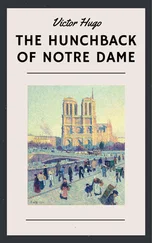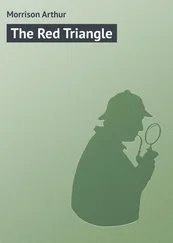For the past month their bivouacs were buzzing with rumors. Oh, there was no doubt that they were going to war again. The veteran tankers had been through this already and knew the signs. Their panzers had trampled the wheat fields of Poland, rolled down the tree-shaded roads of France, and rumbled through the twisting mountain valleys of Yugoslavia.
Well armed, superbly led, and experienced, the young troopers of the 11th Panzer Division were cockily spoiling for another fight. Knowing only victories brought about by Hitler’s ambitious daring, theirs was a generation unencumbered by memories of humiliating defeat of World War I. Did they not thrash the French, their fathers’ tormentors? Did they not make the British wade through the cold waters of the English Channel, scrambling up the boats whisking them to the safety of their island home? How about the Polish, their ancient enemy? The Poles lasted but four weeks, crushed under panzer onslaught and screaming dive bombers.
Only some of them believed the official version claiming that they were training for the invasion of the British Isles. There were better and closer places to train than this backward corner of Eastern Europe. Born out of half-truths and wild guesses, the rumors ran unchecked through the bivouacs. Some said that the Russians were going to let them pass through their territory and attack India, the crown jewel of British Empire, from the north. Others claimed that they were to head south through Romania and Turkey to link up with Rommel’s Africa Corps in Palestine. Only a few thought that they would fight the Soviet Union. After all, didn’t the Führer sign a nonaggression treaty with the commissars? Whichever way they would turn, the men and machines of the 11th Panzer Division, bearing the white stencil of a sword-wielding ghost, the symbol of their unit, were ready.
All the rumors were dispelled later on this muggy evening. Hitler gave the nod, and like wildfire, the code words “The heroes say: Wotan! Neckar fifteen!” spread through the German cantonments in Poland. The greatest invasion in history would begin tomorrow morning! It was now Russia’s turn to submit to the will of the master race!
In his second-story office in a commandeered tavern-turned-headquarters, commander of the 11th Panzer Division Maj. Gen. Ludwig Crüwell was poring through the almost-memorized operational plans. He already prepared the address which would be read to his troops tomorrow morning, shortly after the artillery of all calibers would make its own poignant announcement. The brief statement read:
Soldiers of 11th Panzer Division!
The Führer calls to war against the Bolshevism, the supreme enemy of our National-Socialist realm. The fight will be tough, calling for sacrifices everywhere. The Ghost Division will fall upon the enemy as it did in Serbia, wherever meeting it, attacking it and destroying it.
I know that I can rely on you absolutely, as in the southeast, from the oldest officer to the youngest man.
Our slogan remains—Attack! Our goal—the Dnieper [River]. We want to be the first again, as before in Belgrade.
Heil Führer! [1] Ihr Schrodek, Glaube galt dem Vaterland: Geschichte des Panzer-Regiments 15 , 121.
The stocky, bespectacled major general was immensely proud of his tankers, recruited mainly among the sturdy Silesians with their long military traditions. Like the overwhelming majority of German officers, Major General Crüwell had no doubts about the necessity of destroying the communist Russian state. Belonging to an older generation than his men, Ludwig Crüwell remembered well the cancerous influence of Bolshevism on post–World War I Germany. Now it was time to wield the scalpel.
Down in the street below, Crüwell could see his driver, paint brush in hand, refreshing a large “K” on the side of his armored command vehicle. The three-foot letter indicated that Crüwell’s division belonged to the Panzer Group 1, commanded by Col. Gen. Ewald von Kleist. In just a few short hours, the 11th Panzer Division would begin moving to its pre-attack staging areas near the tiny Polish town of Laszczow, just twenty-five short miles west of the Soviet border.
GERMAN PLANS AND DISPOSITIONS
Crüwell’s division belonged to Wehrmacht’s Army Group South, commanded by a stiff-backed, old-school Prussian field marshal, Gerd von Rundstedt. This powerful group of forces was aimed at the strategically important Soviet Ukraine, with its vast natural resources desperately needed by resource-poor Germany. The original plans of Army Group South called for a two-pronged pincer movement, penetrating the Soviet border defenses and advancing with all haste on to the great Dnieper River, almost four hundred miles east beyond the border. Once there, the northern and southern pincers were to link up on the eastern bank of the river, trapping the bulk of the Red Army in Ukraine on the western side.
The stronger of the two, the northern wing of Army Group South, was composed of Sixth and Seventeenth Field armies, plus its strike force of Panzer Group 1. This force was designated to contend with its primary Soviet counterpart, the Kiev Special Military District. While the Seventeenth Army was to operate against the northern flank of Lvov pocket, the forces striking directly for the Ukrainian capital were the infamous Sixth Army, marching towards its doom at Stalingrad. The Sixth Army, commanded by Field Marshal Walther von Reichenau, was given the task of breaching the Soviet border, paving the way for Panzer Group 1 under von Kleist, an army in all but name, to break into operational maneuver space.
The Eleventh Army deployed in Rumania was the southern pincer of Army Group South, originally tasked to attack against Odessa Military District. However, Hitler’s last-minute modification ordered the Eleventh Army to stay put and to guard against a possible Soviet counteroffensive into Rumania, protecting Ploesti oil fields, vital for the German war effort. The Rumanian Third and Fourth armies, supported by over five hundred aircraft, were also part of Army Group South. The gap between the two parts of Army Group South, running along the craggy Carpathian Mountains, was thinly held by a Hungarian mobile corps.
Stretching from a small Polish town of Wlodawa in the north, to the Danube Delta in the south, along almost five hundred miles of border, the Army Group South numbered 41 German divisions, supported by 772 aircraft of Luftflotte 4. The above number reflects strictly the number of German divisions. Even though there were additional Rumanian and Hungarian divisions included in the overall strength of Army Group South, the German planners did not trust their abilities or motivations. This attitude is clearly illustrated in a diary entry by Generaloberst Franz Halder, chief of Army General Staff: “It would be pointless to base our operational plans on forces which cannot be counted on with certainty. As far as actual fighting troops are concerned, we can depend only on German forces…. On Romania we cannot rely at all. Their divisions have no offensive power…. Hungary is unreliable. Has no reasons for turning on Russia.” [2] Halder, 337.
Breaking down German mission objectives, from the long-range strategic goal of reaching Kiev, individual German corps and armies were to strike for intermediate operational objectives. On the extreme left, north, flank of Army Group South, the XVII Corps was to attack in direction of Kovel, safeguarding the left flank of German Sixth Army, whose intermediate objective was the city of Lutsk. Aimed against it was the XXIX Corps of the Sixth Army, tasked with breaching Soviet defenses along the Western Bug River and allowing the III Mechanized Corps of Panzer Group 1 to race onto Lutsk. The ancient town of Lutsk, founded in the eleventh century, was the first important stop on the road to Kiev. Termed Panzerstrasse by Gen. Eberhard von Mackensen, commander of III Mechanized Corps, this major artery ran from German-occupied Poland to Lutsk, then Rovno, Zhitomir, and, finally, to Kiev. [3] Mackensesn, 4.
Читать дальше
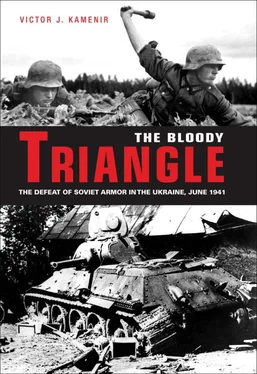
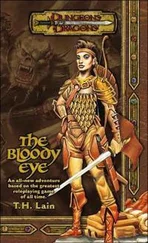

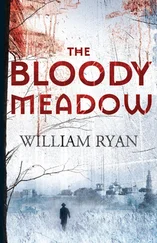

![О Генри - Социальный треугольник [The Social Triangle]](/books/405340/o-genri-socialnyj-treugolnik-the-social-triangl-thumb.webp)
